The week at a glance
- Gyrfalcon in Pembrokeshire
January conceded to February this week and the weather certainly managed to remind us that we are still rooted, very firmly, in the midst of winter. A healthy serving of early February snow was dished up across much of central, southern and eastern England as a weather front from Russia careered across the near continent and over the English Channel and the North Sea.
As far as the birds were concerned, it was rather quiet this week. The best bird of the week was actually seen last week as well: a rather super-looking first-winter Gyrfalcon was photographed in a garden at Hakin, near Milford Haven (Pembrokeshire) on 25th January, feeding on a pigeon. After a further report at Honeyborough in Neyland on 29th, the bird was seen again near Milford Haven, flying over the Cleddau Estuary on 2nd. There has been some comment on the fact that the bird was seen in a garden (when eating the pigeon), but the garden does overlook the water at Milford Haven and it wasn't that long ago that there was one of these beauties drifting around the headlands of Scilly and west Cornwall. It is so tempting to suggest that the Celtic birds are actually one in the same.
Balearic Shearwaters managed to sneak their way into double figures this week, with up to 10 birds noted from Scilly to Dorset. Single Grey Phalaropes were seen off Bardsey Island (Gwynedd) on 30th, around Torbay (in Brixham and Torquay) on 31st–1st, off Sennen (Cornwall) on 2nd and at South Gare (Cleveland) on 3rd, while two were noted off Cot Valley (Cornwall) on 4th. A first-winter Sabine's Gull was something of a surprise when seen flying over near Neilston (Clyde) on 1st, while rather more expected in winter were the single Pomarine Skuas seen in Suffolk and East Yorkshire this week. A handful of single Little Auks were reported, including one off Anstruther (Fife) on 31st, another in the harbour at Dun Laoghaire (Co. Dublin) on 1st, and one at Hartlepool (Cleveland) on 4th.
A single Cattle Egret was still to be found on St. Mary's (Scilly) to 4th. In Cornwall, it was very much a repeat of last week as far as the numbers and distribution of birds was concerned. At least eight birds were still around Newtown-in-St. Martin to 1st, three birds were seen at Drift Reservoir on 1st, one or two were again at St. Breock's Down on 30th and singles were at Polzeath and Pendeen during the week. In Devon too it was "as you were" really: four birds remained on the Kingsbridge Estuary to 29th, up to three birds were still around the Exe Estuary at Powderham to 4th and in the east of the county, three birds were still at Colyton to 31st at least. A Cattle Egret was at Shapwick Heath (Somerset) on 31st. In Pembrokeshire, a Cattle Egret has been seen "recently" near Lawrenny and in Norfolk, one was reported near Cockley Cley on 3rd–4th. In County Cork, seven Cattle Egrets were at Timoleague on 3rd–4th and six birds remained at Beamish's Pool, Inchydoney Island to the latter date. Other records in the county this week included two at Lissavard on 31st and two still at Rossleague on 1st, when singles were seen near Lissagriffin and Garinish Point. Another was near Youghal on 3rd with one still at Boonagh on 4th. In County Waterford, up to four Cattle Egrets remained at Ballycrompane to 1st.
At Pymoor (Cambridgeshire), the two Great White Egrets remained to 4th (though they were often not seen together). On 3rd, Lothian's fourth Great White Egret of the decade was seen, for a short time, at Aberlady Bay. In Somerset, a single bird continued to move between Shapwick Heath and Ham Walls to 31st. Elsewhere, a Great White Egret was seen at Middleton Hall Pools (Warwickshire) on 30th and 1st and, also on 30th, one moved from Castle Marsh (Suffolk) to Burgh St. Peter (Norfolk). Later in the week, this particular individual was back at Castle Marsh on 3rd–4th. In Lincolnshire, a Great White Egret was at Thurlby Fen on and off from 31st–4th, while over in County Kerry another was noted around Tralee on 30th. Six Spoonbills continued their winter-long residency at Isley Marsh (Devon) to 4th while, elsewhere in the county, two birds were seen at Ernesettle on 31st–1st and a single bird was still at Dawlish Warren to 31st. Other singles this week included two in Dorset (at Lodmoor and Poole Harbour), one in Essex (at Old Hall Marshes), one in Carmarthenshire (at the National Wetlands Centre) and another still in County Kerry (at Castlemaine). Only three Common Cranes were seen in the Norfolk Broads this week, while four were seen at Lakenheath (Suffolk) on 1st and two were still at Eldernell (Cambridgeshire) to 1st, then at March Farmers on 3rd.
The adult Red-breasted Goose lingered in Hampshire to 4th, seen on Oxey, Pennington and Normandy Marshes. The Cackling Canada Goose at Caerlaverock (Dumfries & Galloway) was still loitering with the Barnacle Geese until 31st. In Lancashire, a Canada Goose seen at Downholland and Altcar Withens during the week seemed to be a Atlantic Canada Goose (race canadensis) but whether it had made any sort of oceanic crossing to link up with the Pink-footed Geese is quite another matter. A crossing from the local park has been favoured by some local birders in the region. The only Snow Goose this week was the regular wintering bird at Craobh Haven (Argyll), seen on 30th and 1st. Two adult Black Brants were together on the Fleet (Dorset) on 1st, while two separate singles were still in Norfolk this week (at Morston and Holkham). In West Sussex, a Black Brant was at Fishbourne Creek from 31st–1st, another lingered on the Exe Estuary (Devon) for much of the week and in Hampshire a Brant was seen at Hurst Castle on 31st and Farlington Marshes on 3rd. Also on 3rd, a Black Brant was seen at Wallasea Island (Essex). In Ireland, one was at Inishcrone (Co. Sligo) on 1st. Having spent much of the winter in Norfolk, the hybrid adult Ross's Goose x Pink-footed Goose appeared at Stalmine (Lancashire) on 3rd. Presumably, the real thing won't be far behind....

Green-winged Teal, North Cave Wetlands, East Yorkshire (Photo: Mark Ranner)

King Eider, Kincraig Point, Fife (Photo: Craig Shaw)
Single drake Lesser Scaup remained at Loch Leven (Perth & Kinross) and Holme Pierrepont (Nottinghamshire), both to 1st, while Ring-necked Ducks were also in relatively short supply. A new female was found at Sturminster Marshall (Dorset) on 2nd and the female at Martnaham Loch (Ayrshire) remained to 3rd. In Ireland five birds were seen during the week: two were on Lough Gill (Co. Kerry) on 31st, single drakes were near Macroom (Co. Cork) and Cornabrass Lough (Co. Fermanagh) on 1st and a drake was seen again at Ballyallia Lake, near Ennis (Co. Clare) on 3rd. Fifteen drake Green-winged Teal were seen across Britain and Ireland this week: in Scotland, lingering birds were at Capringstone Flash (Ayrshire) and Kinneil Lagoons (Forth), one was seen in Wales at Newport Wetlands (Gwent), while six were noted in England, at North Cave Wetlands (East Yorkshire), Marshside and Seaforth (Lancashire), Inner Marsh Farm (Cheshire), Bowesfield Marsh (Cleveland), Eyebrook Reservoir (Leicestershire), Buckenham Marshes (Norfolk) and Minsmere (Suffolk). In Ireland, two drakes were in County Cork on 1st, at Kilbrittain and Inishbeg, with another at Kilcoole (Co. Wicklow) on the same date. The regular bird in Bell Harbour (Co. Clare) was seen again on 2nd. In Dumfries & Galloway, the drake American Wigeon was again at Caerlaverock on 3rd. A Surf Scoter was seen off Kilcummin Head (Co. Mayo) on 31st when the regular female was again in Hough Bay, Tiree (Argyll), and the usual females remained off Dawlish Warren (Devon) and Silver Strand (Co. Galway) all week. The second-winter drake King Eider was still off Kincraig Point (Fife) to 31st, while the first-winter male and female were still around the bay at Lissadell (Co. Sligo) to 3rd. Following a distant, probable, drake King Eider flying by Aberlady Bay on 2nd, birders in Lothian finally pinned the bird down near Fidra on 4th, representing the first drake in the county since 1991. Almost inevitably, the drake Hooded Merganser was still at Radipole Lake (Dorset) to 4th.

Lesser Yellowlegs, Southwold, Suffolk (Photo: Chris Mayne)
Once again, the only shorebirds of note were the adult Long-billed Dowitcher at Dundalk (Co. Louth), which was still present to 1st and the Lesser Yellowlegs, which remained at Walberswick (Suffolk) from 29th–3rd.
Single wintering Rough-legged Buzzards remained at familiar sites in to the new month. Birds were seen at Capel Fleet and the Harty Marshes (Kent), Coveney (Cambridgeshire) and Farforth (Lincolnshire). Also in Lincolnshire, another Rough-legged Buzzard was seen north of Horncastle on 31st, with a further new bird noted at Semer Hill near Hadleigh (Suffolk) on 3rd.

Caspian Gull, Potteric Carr YWT, South Yorkshire (Photo: Darren Starkey)
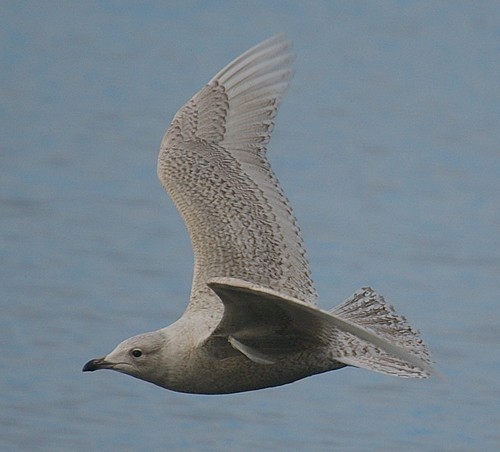
Iceland Gull, Rossaveal, Galway (Photo: Derek Charles)
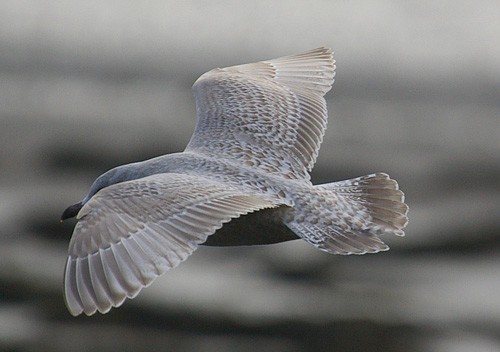
Kumlien's Gull, Clifden, Galway (Photo: Derek Charles)
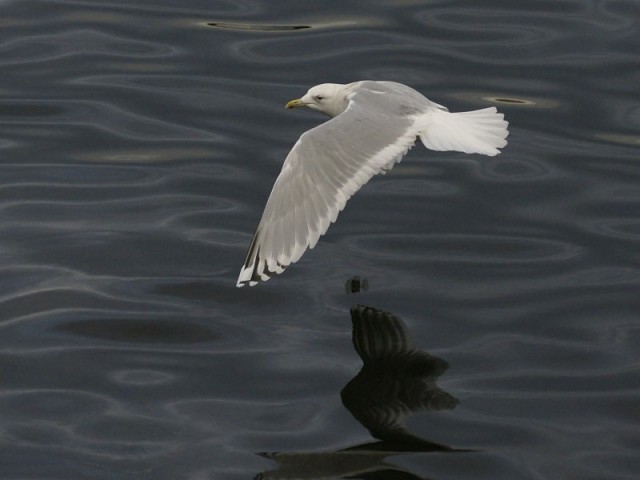
Kumlien's Gull, Nimmo's Pier, Galway (Photo: Tom Cuffe)
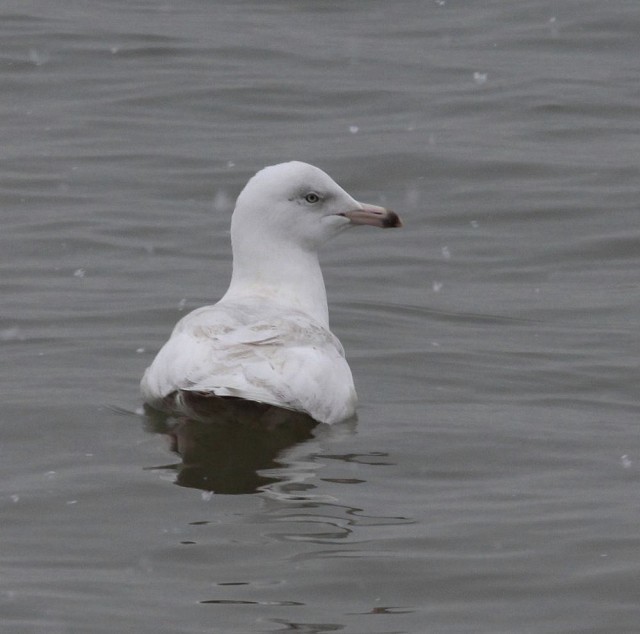
Glaucous Gull, Southsea, Hampshire (Photo: Steve Copsey)

Ring-billed Gull, Cobh, Cork (Photo: Ronan McLaughlin)
An adult Bonaparte's Gull was seen around Cobh (Co. Cork) on 1st. This has been a particularly poor winter for this pleasing Nearctic traveller; the only other record since the winter began came from Rosscarbery (also in Cork) at the start of December. Numbers of Caspian Gulls were up slightly on last week — at least 24 noted (compared to 14 or so last week) — with at least six birds in Suffolk, three of which were seen at Lakenheath on 31st, with two more at Southwold the same day. Also on 31st, three Caspian Gulls were at Pitsea (Essex) and two were at Throckmorton Tip (Worcestershire) on 1st. It was another very tidy week for Iceland Gulls, with around 135 birds recorded. Over 70 birds were noted around Britain, including five juveniles on St. Mary's (Scilly) on 29th, four at Throckmorton Tip on 1st, up to six on Lewis (Outer Hebrides) and five on mainland Shetland. In Ireland, over in Donegal, we finally had word from Killybegs, where 12 Iceland Gulls were seen on 1st, following on from eight at Greencastle (Co. Down) on 29th. At least nine birds were also noted around Galway. Ireland also fared well again this week with Kumlien's Gulls, with eight of the ten birds reported this week being seen there. Four birds were seen in County Galway, two remained at Clifden (the dark juvenile and the third-winter) and two (an impressive dark-winged adult and a second-winter) appeared at Nimmo's Pier on 31st. Also on 31st, a third-winter was seen at Islandmagee (Co. Antrim) and another was at Great Island (Co. Cork). A juvenile Kumlien's Gull was at Corbally Road Reservoir (Co. Antrim) on 29th with an adult there on 4th. Further juveniles were on St. Mary's (Scilly) and Forfar Loch (Angus), while a fascinating non-Kumlien's "white-winged" gull hybrid was at Queen Mother Reservoir (Berkshire) on 3rd. After an impressive week last week, with around 100 birds noted, this week has seen numbers of Glaucous Gulls climb further still to around 145. Pride of place has to go to three sites that scored double figures during the week. In Argyll, on Tiree, a magnificent 16 birds were seen at Rubha Chraiginis on 2nd (the island total was 18 for the day). On the Outer Hebrides, on South Uist, a whale carcass on the Gualan spit managed to attract 14 birds on 1st; the group comprised two adults, a third-winter, two second-winters and nine juveniles. The few birders living around the island group managed a total of 21 birds on the first day of the new month — imagine how many more may have gone undetected. Over in County Mayo, 13 Glaucous Gulls were seen at Belmullet on 31st and in County Cork at least 20 birds were seen in the week, including eight at Ballybrannigan on 31st and six at Courtmacsherry on 1st. Also on 1st, eight Glaucous Gulls were seen up at Killybegs (part of the total of some 53 birds in Ireland this week). In Wales, the second-winter Ring-billed Gull remained at Lamby Lake (Glamorgan) to 3rd, while England's five birds included a first-winter at Aston-on-Trent GPs (Derbyshire) on 31st and adults at Langstone Harbour (Hampshire) on 2nd and Moore Nature Reserve (Cheshire) on 4th. Three regulars were seen in Scotland (in Argyll, Angus and Forth) while in Ireland at least 17 birds were seen (in seven counties) with County Cork managing a score of 12 this week. Of those, three were at Cuskinny Marsh on 1st, following on from two at Ballydehob on 31st and 4th. Two adults were seen again at Sandymount (Co. Dublin) on 1st. The adult Forster's Tern was still being seen off Nimmo's Pier (Co. Galway) during the week, to 2nd at least.
In Cornwall, the young male Snowy Owl was seen at Men-an-Tol near Morvah on 28th, and what was presumably the same bird was then reported on Goonhilly Downs on 3rd. A Dark-breasted Barn Owl was seen and photographed at Welney (Norfolk) on 28th and, also in Norfolk, the Black-bellied Dipper continued to move between Hunworth and Letheringsett on 31st–1st. Two birds were reported together at the Natural Surroundings Reserve on 30th. Around 12 Great Grey Shrikes were noted during the week, with one or two birds in both Hampshire and Derbyshire, along with others lingering in North Yorkshire, Norfolk, Suffolk, East Sussex and Gloucestershire. For the first time in two weeks or so, the Great Grey Shrike was reported again from Wishmoor Bottom (Berkshire) and another was seen again around Santon Downham, on the Norfolk/Suffolk border on 4th. A Great Grey Shrike was also reported "recently" near Ballyshannon (Co. Donegal), but a search for this Irish mega yielded nothing at the week's end. A Hoopoe was reported from near Frensham Great Pond (Surrey) on 4th.
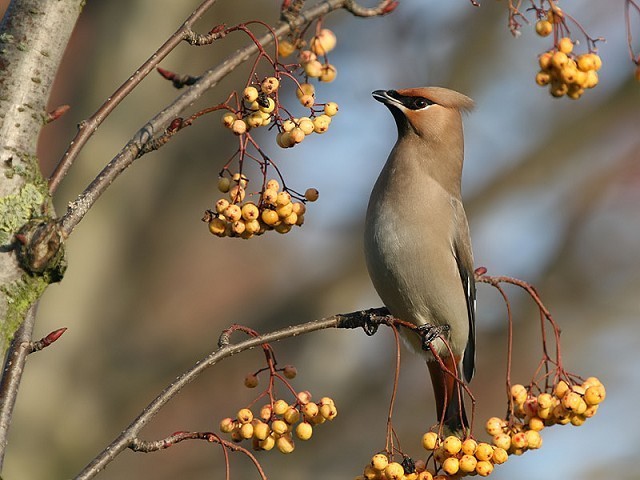
Waxwing, Warrington, Cheshire (Photo: Steve Seal)
Peak numbers of Waxwings this week included 238 in Barnsley (South Yorkshire) on 29th (with at least 150 in the nearby Dearne Valley to 1st), over 160 still around Brownhills (West Midlands) on 30th, a group of 150 remaining in Leeds (West Yorkshire) on 2nd, 140 in Motherwell (Clyde) on 1st, and another 100 birds in Netherlee on the outskirts of Glasgow on the same day. Also on 1st, further groups of 100 on the same date were seen at Longton (Staffordshire) and Washington (Co. Durham), the latter group rising to 200+ by 4th. In Derbyshire, 130 Waxwings were at Alvaston on 3rd and 120 were in Bangor (Co. Down) on the same date.
Siberian Chiffchaffs were reported at Rainham Marshes (London) on 30th and, still in London, at Chiswick on 2nd; two were seen on Portland (Dorset) on 4th.
A first-winter Coues's Arctic Redpoll was at Woodwalton Fen (Cambridgeshire) on 31st–1st. This would be the third record for the county if accepted, and all of them have been at the same site (once listed as Huntingdonshire). The first record for Cambridgeshire was a group of three seen at Woodwalton from January to April 1996, followed by another there in December 2001. A female Serin was something of a surprise when trapped and ringed at Woolston Eyes (Cheshire) on 31st. The male Penduline Tit at Lakenheath (Suffolk) was present to 29th, while the bird at Clennon Valley, Paignton (Devon) remained to 4th, when one was seen at Strumpshaw Fen (Norfolk), the first in the county since one at Weybourne and Salthouse in April 2001. In Cornwall, the first-winter Rose-coloured Starling was still being seen around the gardens of Newquay from 29th–2nd at least.
Photo of the Week

Blackbird, Forest of Dean, Gloucestershire (Photo: Lewis Thomson)
The big story in the UK this week has been the weather, with the highest levels of snowfall in almost 20 years. Whilst many bird photographers have retreated indoors, others have been out making the most of the photo opportunities. Our pick of the resulting images is Lewis Thomson's photo of a female Blackbird perched on the head of a garden statue. As we've come to expect from Lewis, this image has top-quality composition, colours and use of light. However, for a photo of a Blackbird to be chosen as Photo of the Week (for the first time), it has to have something special. In this case, it's the way it tells the story. The snow on the Blackbird's bill as well as on the shoulders of the statue, with further snow still falling, symbolizes the fact that adverse conditions affect both birds and man. The image also highlights our inter-dependency, the bird's posture and expression almost suggesting a plea for help in return for enriching our lives.
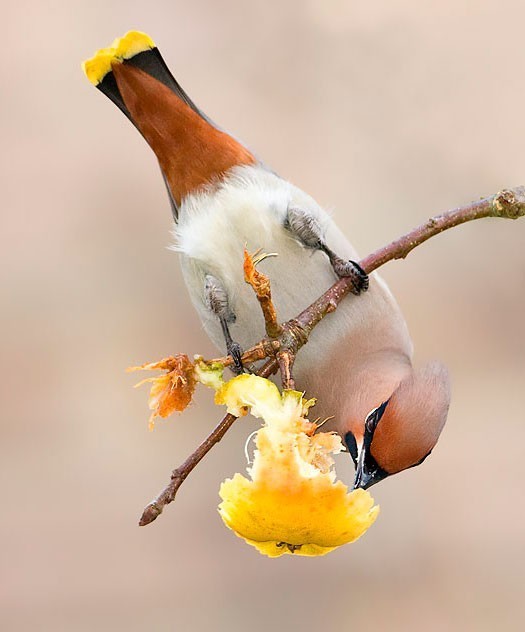
Waxwing, Darley Dale, Derbyshire (Photo: Robert Askew)

Grey Heron, Regent's Park, London, Greater (Photo: Fraser Simpson)

Blackcap, Brightlingsea, Essex (Photo: Simon Bishop)

Short-eared Owl, undisclosed site, South Yorkshire (Photo: Ian Sexton)

Long-tailed Tit, Cannock Chase, Staffordshire (Photo: Rob Smith)

Whooper Swan, Martin Mere WWT, Lancashire (Photo: Mike Atkinson)

Redwing, Belgium (Photo: Rudi Debruyne)

Bar-tailed Godwit, Titchwell RSPB, Norfolk (Photo: Richard Bedford)

Common Snipe, Aber Ogwen NR, Gwynedd (Photo: Pauline Greenhalgh)

Common Kingfisher, Yarrow Valley CP, Lancashire (Photo: David Cookson)

Siskin, Chamber's Farm Wood NR, Lincolnshire (Photo: Russell Hayes)

Glaucous Gull, Bridlington, East Yorkshire (Photo: Steve Race)

Pheasant, Martin Mere WWT, Lancashire (Photo: Maxwell)

